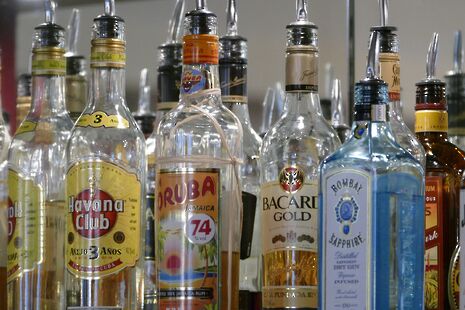Varsity explains: that Freshers’ Week hangover
Feeling unwell after the rush of Freshers’ Week consecutive club nights? Here’s why.

It’s far too early or far too late. You sort of remember what happened in the hours before, but are in too much pain to care. You’ve got a hangover, and it’s not looking pretty. How did you get into this state, again?
Hangovers generally show up as a combination of dehydration, headache, nausea, pain, and is a scourge of Fresher’s week (scientific fact, we are told). The biochemistry of this is fairly straightforward: in the liver (and stomach), ethanol is broken down into acetaldehyde by the enzyme alcohol dehydrogenase (ADH); this is then further processed to acetate by the enzyme acetaldehyde dehydrogenase (ALDH), largely in mitochondria, and is eventually used for energy production.
The intermediate product of this reaction, acetaldehyde, is responsible for some of the symptoms associated with hangovers. It is an irritant of the skin and mucous membranes, causing nausea, vomiting, sweats, and headaches. Since the ADH and ALDH enzymes don’t work at the same rate, differences in their activities, and the total amount of ethanol to be processed, determine the amount of acetaldehyde build up. Differences in the genes for these enzymes are partly responsible for differences in the response to alcohol: less active forms of the enzyme lead to a larger build up of acetaldehyde, causing ‘flush’.
Ethanol itself has various effects on the body (aside from the obvious). The dehydration that occurs with hangovers, results from ethanol leading to a decreased secretion of antidiuretic hormone, a peptide hormone which usually increases the amount of water that is reabsorbed by the kidneys. Reducing it makes you pee more, and thus, dehydrated. It is not only all the water that you lose that is a problem, but also the electrolytes that go down the drain with it. Some of the gastric discomfort arises from the increased gastric acid production that ethanol causes, irritating the stomach lining. This generally upsets your stomach, and contributes to the nausea and vomiting.
Many alcoholic beverages actually contain some methanol, as a byproduct from the brewing process. The enzymes involved in breaking down ethanol perform the same role with methanol, but only after the ethanol has been fully metabolised, as its affinity is much stronger for ethanol. The problem is that methanol is really toxic. It is broken down into formaldehyde, and then into formic acid. Formic acid is part of the irritants some ants spray and causes the sting of nettles, and formaldehyde is used to fix and preserve biological specimens.
So now you know why you woke up feeling like a cat run over. All that’s left to say is, drink responsibly, and stay hydrated.
 News / Local business in trademark battle with Uni over use of ‘Cambridge’17 January 2026
News / Local business in trademark battle with Uni over use of ‘Cambridge’17 January 2026 News / Cambridge bus strikes continue into new year16 January 2026
News / Cambridge bus strikes continue into new year16 January 2026 Comment / Fine, you’re more stressed than I am – you win?18 January 2026
Comment / Fine, you’re more stressed than I am – you win?18 January 2026 News / News in Brief: cosmic connections, celebrity chefs, and ice-cold competition18 January 2026
News / News in Brief: cosmic connections, celebrity chefs, and ice-cold competition18 January 2026 Film & TV / Anticipating Christopher Nolan’s The Odyssey17 January 2026
Film & TV / Anticipating Christopher Nolan’s The Odyssey17 January 2026










